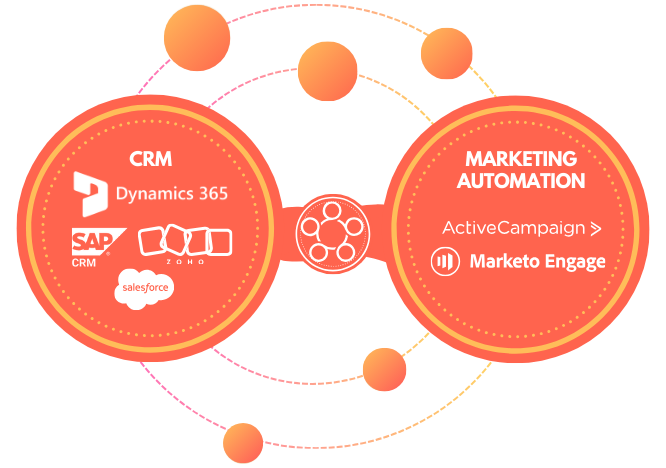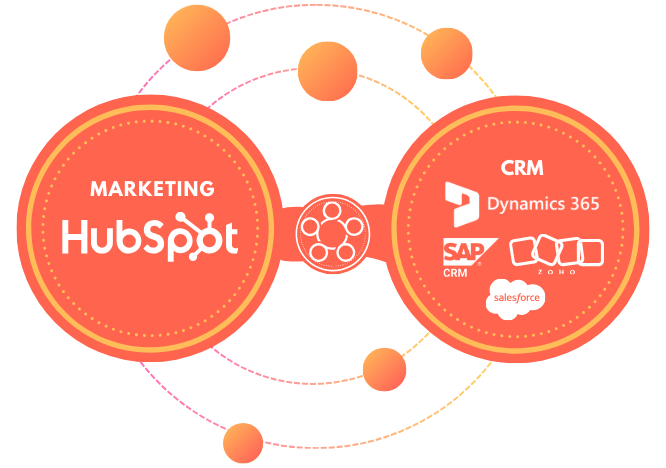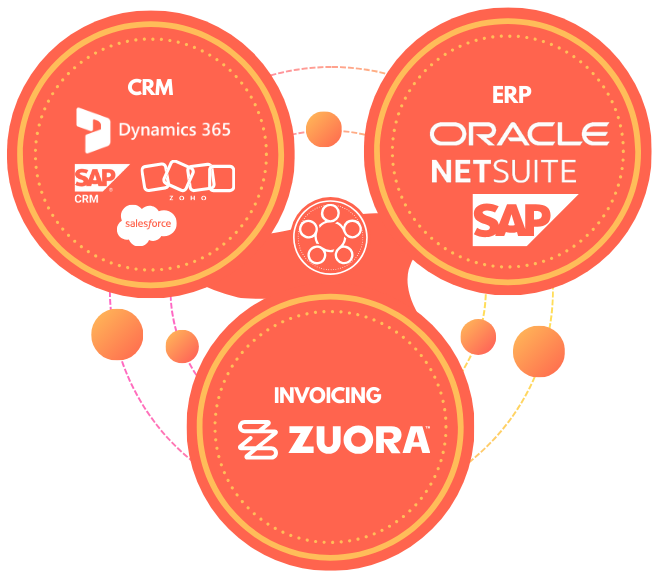

Customer Relationship Management (CRM) systems are essential for managing client interactions, tracking sales, and streamlining customer service processes.
However, disconnected systems often lead to inefficiencies, manual data entry errors, and missed opportunities for a 360° view of a customer. Solution? CRM integration. By connecting different systems, businesses can enhance their CRM operations, eliminate data silos, and improve accuracy, enabling a more efficient and effective approach to customer management.







In many businesses, different CRM functions rely on multiple applications:
🔸 CRM software for customer interaction and sales tracking.
🔸 Marketing Automation Systems for lead generation and campaign management.
🔸 Customer Support Systems for handling customer queries and issues.
🔸 Billing and Invoicing Systems for managing payments and invoices.
🔸 Inventory Management Systems for managing products and inventory.
While each system excels individually, they often operate in silos. This lack of integration forces teams to manually transfer data between platforms, which delays processes and increases the chances of errors.
Manual data entry can negatively impact CRM operations in several ways:
🔸 Duplicate Data Entry: Sales and support teams often have to enter the same customer and product information in multiple systems, leading to duplication and inconsistencies. For example, updates in product availability or pricing may not reflect across all systems, affecting the Quote to Cash process.
🔸 Inaccurate Reporting: Disconnected systems lead to inconsistent data, making it difficult to generate reliable reports. This limits the ability to extract meaningful insights from customer and inventory data, and hinders campaigns and promos from being accurately targeted.
🔸Compliance Risks: CRM systems must comply with data protection regulations such as GDPR. Errors due to manual data entry can result in non-compliance, leading to potential fines and reputational damage.
🔸 Lost Productivity: Teams spend excessive time on administrative tasks, reducing their ability to focus on strategic initiatives like improving marketing integration or developing more personalized customer campaigns.



Integrating CRM with marketing automation tools allows businesses to streamline lead tracking. When a lead submits a form, the data is instantly captured in the CRM and passed to the sales team, while also being aligned with marketing campaigns and promos to ensure consistent messaging and follow-up.
Integration between CRM and support platforms ensures that when a customer contacts support, agents have a complete 360° view of the customer, including purchase history, service issues, and ongoing promotions. This leads to faster resolution times and a more personalized customer experience.
Integrating CRM with products and inventory management systems ensures that sales teams have real-time visibility into stock levels, allowing for accurate quoting and efficient order processing. This is critical for managing the Quote to Cash process effectively.
Marketing integration between CRM and campaign management tools allows businesses to better target customers with relevant offers based on their purchasing history. By syncing data between CRM and marketing systems, companies can automate promos and track their performance without manual intervention.


